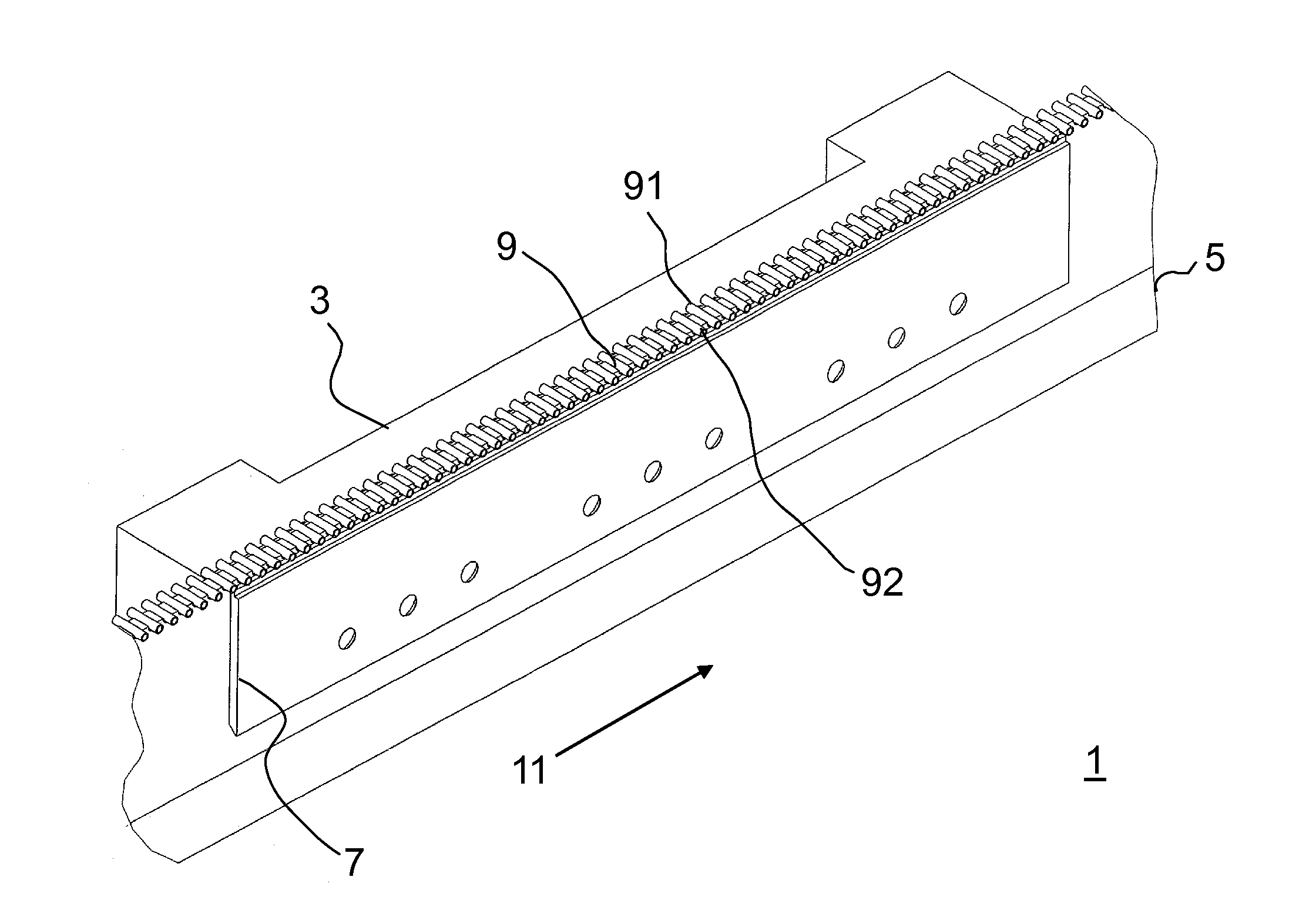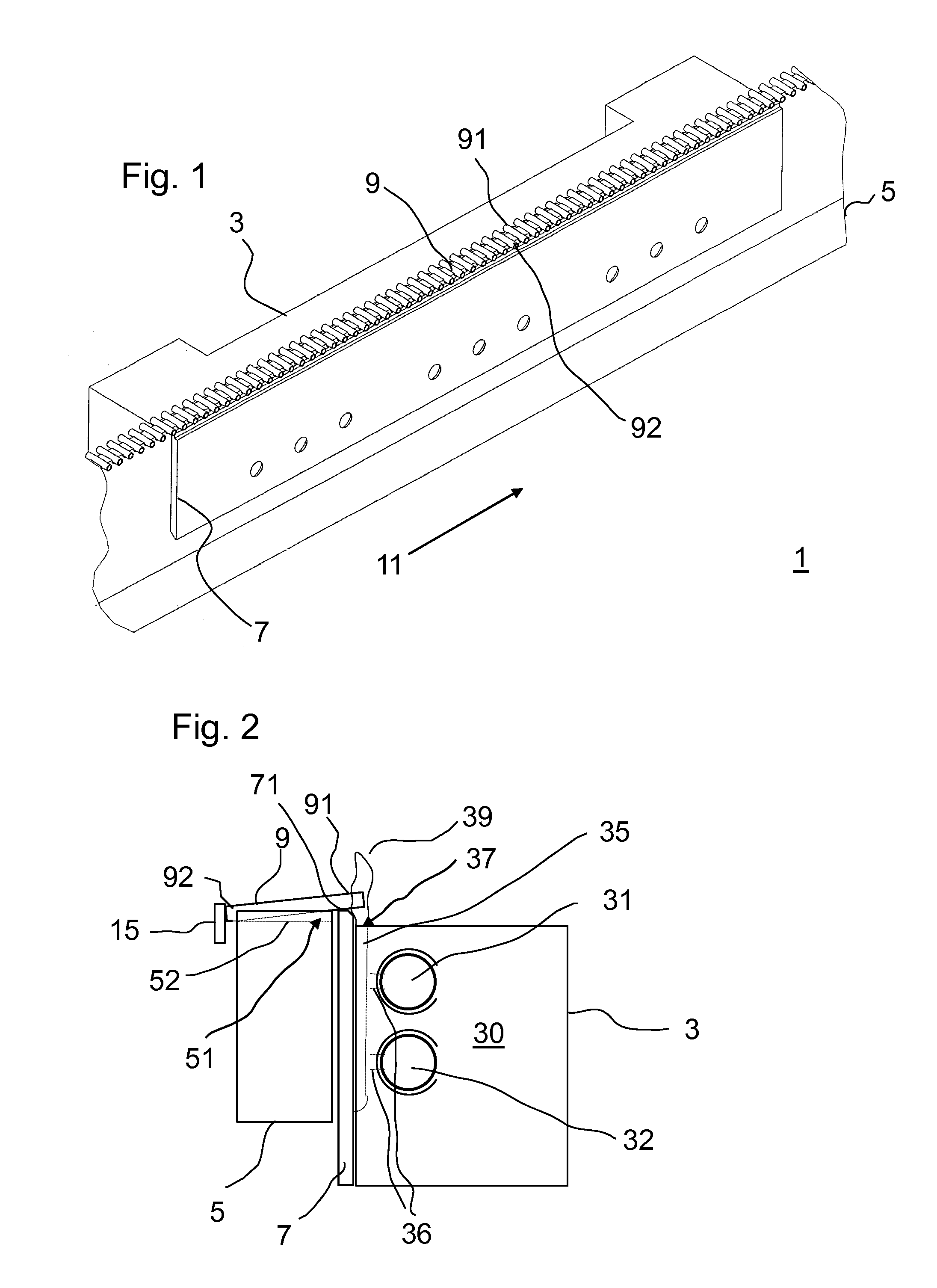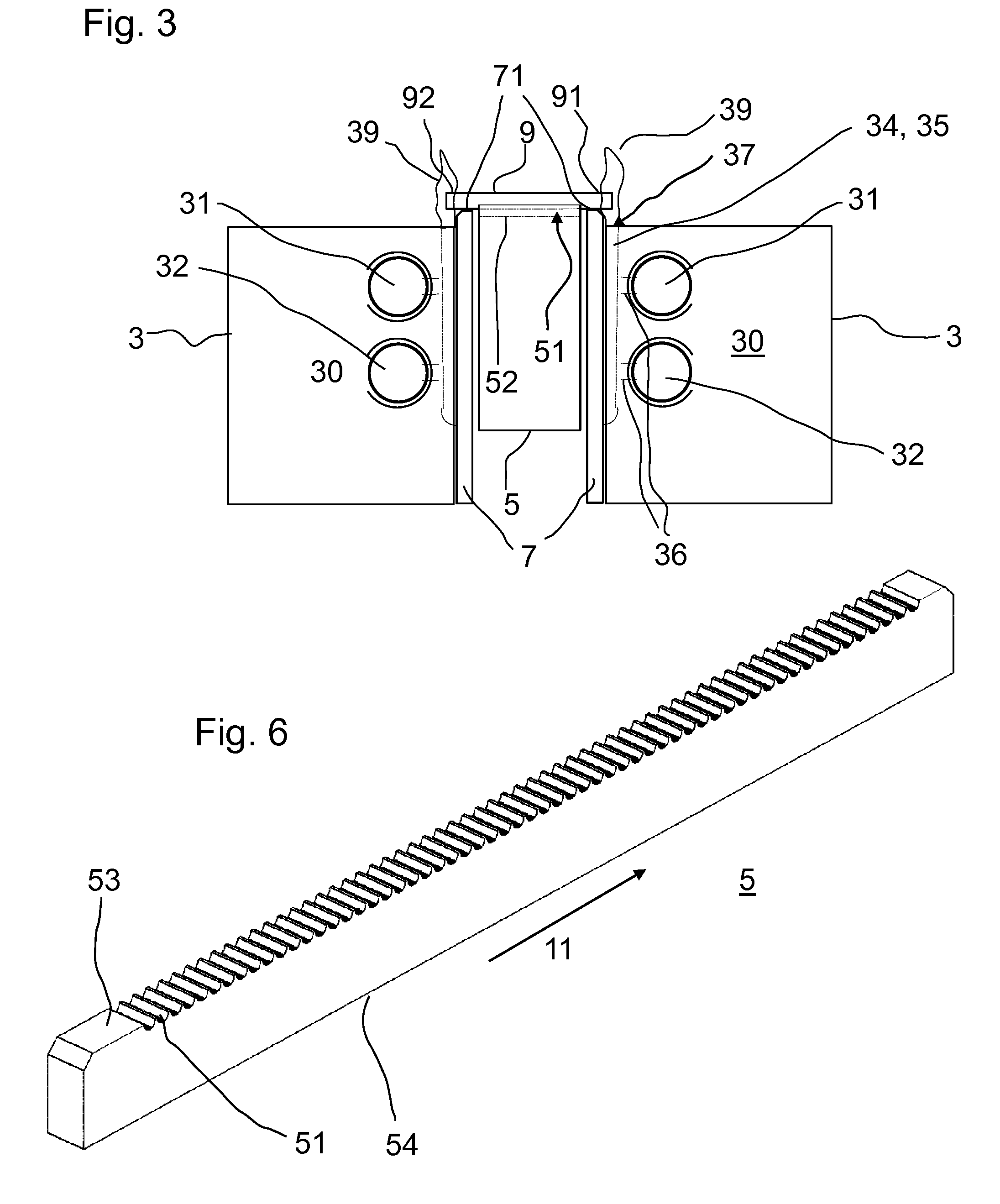Method and device for melting the ends of rods
a technology of melting end and glass rod, which is applied in the direction of glass tempering apparatus, glass making apparatus, manufacturing tools, etc., can solve the problems of reducing stability, affecting the melting process, and insufficient melting of rod ends, so as to facilitate the lifting of glass rods, facilitate the flame treatment of the end of glass rod, and facilitate the effect of regulating the burner
- Summary
- Abstract
- Description
- Claims
- Application Information
AI Technical Summary
Benefits of technology
Problems solved by technology
Method used
Image
Examples
Embodiment Construction
[0039]FIG. 1 shows parts of a device according to the invention which is designated in its entirety by the reference symbol 1. The device 1 for treating the ends 91, 92 of glass rods 9 comprises a burner 3, a carrier 5 with receptacles for placing the glass rods 9 in, an advancing device (not illustrated in FIG. 1) for carrying the carrier 5 past the burner 3 in an advancing direction 11, and a rail 7 which runs along the carrier 5 and whose upper side runs above the lowest point of the receptacles in the region of the burner 3 so that as glass rods 9 which have been inserted into the receptacles are carried past the flames of the burner 5 said glass rods 9 are lifted by the rail 7 by means of the advancing device in the receptacles, and roll on the upper side of the rail 7. In the process, the glass rods 9 are carried past the burner 3 at an advancing speed in the range from 0.1 to 10 cm / s, preferably in the range from 0.5 to 5 cm / s, particularly preferably in the range from 0.8 to...
PUM
| Property | Measurement | Unit |
|---|---|---|
| diameter | aaaaa | aaaaa |
| speed | aaaaa | aaaaa |
| diameter | aaaaa | aaaaa |
Abstract
Description
Claims
Application Information
 Login to View More
Login to View More - R&D
- Intellectual Property
- Life Sciences
- Materials
- Tech Scout
- Unparalleled Data Quality
- Higher Quality Content
- 60% Fewer Hallucinations
Browse by: Latest US Patents, China's latest patents, Technical Efficacy Thesaurus, Application Domain, Technology Topic, Popular Technical Reports.
© 2025 PatSnap. All rights reserved.Legal|Privacy policy|Modern Slavery Act Transparency Statement|Sitemap|About US| Contact US: help@patsnap.com



